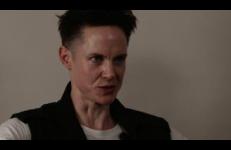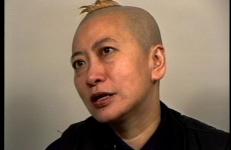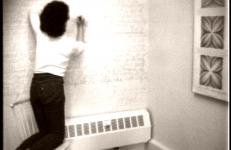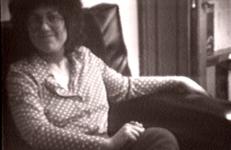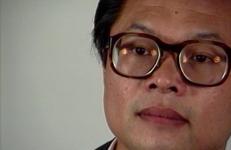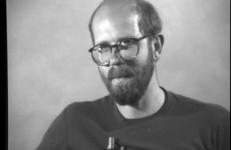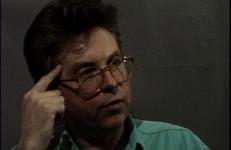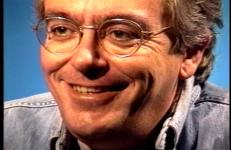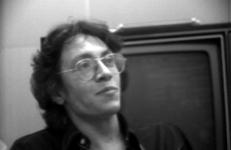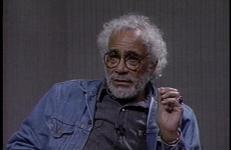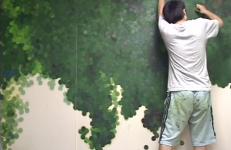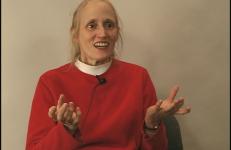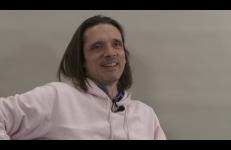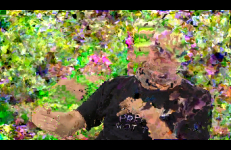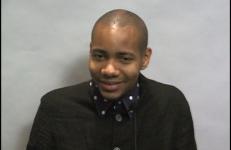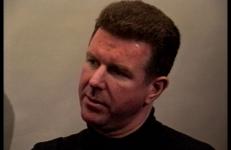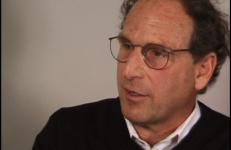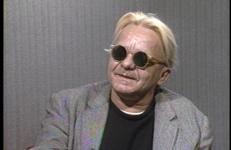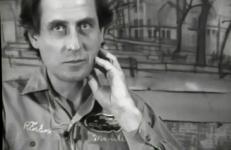In conversation with David Getsy — an art historian focusing on queer and transgender methodologies in sculpture theory and performance history — Cassils discusses their monumental performance artworks and inspirations.
Interview
There are approximately 30,000 Filipino guest workers living within the State of Israel. The majority are female and work as caregivers for the elderly or sick. In Tel Aviv they live in shanty town conditions around the central bus station also known as the ‘Tachana Mercazit’. On Saturdays, buses in the Tachana do not work, and this giant modernist building is occupied by guest workers, who spend their time shopping, partying and socializing in bars, clubs and shops within the compound. Beauty contests are very popular among Filipinos both at home and abroad.
Taiwanese artist Shu Lea Cheang (b. 1954) tackles conceptions of racial assimilation in American culture, examining the political underbelly of everyday situations that affect the relationship between individuals and society.
Judy Chicago (b.1939) is an artist, author, feminist, educator, and intellectual whose career now spans four decades. In 1974, Chicago turned her attention to the subject of women’s history to create her best known work, The Dinner Party, which was executed between 1974 and 1979 with the participation of hundreds of volunteers. This monumental multimedia project, a symbolic history of women in western civilization, has been seen by more than one million viewers during its 16 exhibitions held at venues spanning six countries.
Judy Chicago (b.1939) creates large-scale, collaborative artwork has brought greater prominence to feminist themes and craft arts such as needlework and ceramics. Her most famous work, The Dinner Party (1979), was an enormous collaboration with hundreds of volunteers including ceramicists, china painters and needleworkers. The monumental finished piece has place settings for 39 mythical and historical famous women, writing them back into the heroic history usually reserved for men. Earlier in her career, Chicago was part of the Finish Fetish movement within Minimalism.
Mel Chin (b. 1951) received national attention when he had to defend the artistic merits of his work Revival Field to the NEA in 1990. The work is a public sculpture aimed at cleansing toxically polluted areas of land through the introduction of hyperaccumulators, plants that absorb heavy metals through their vascular systems. In this interview with Craig Adcock, Chin discusses the research and development that went into Revival Field, which combines such disciplines as alchemy, botany, and ecology, and the subsequent controversy that resulted from the piece.
Chuck Close (b.1940) has been a leading figure in contemporary art since the early 1970s. As a young artist in the mid-’60s, Close turned away from the model of Abstract Expressionism to develop a simple but labor-intensive working method based upon repetition and small color elements. Denying himself expressive gesture, Close builds shapes and tonal variations within a working grid that provides the structure for large-scale, close-up portraits. Close’s formal analysis and methodological reconfiguration of the human face have radically changed the definition of modern portraiture.
John Arthur Clark (1943-1989) was born in Yorkshire, England. He attended Hull College of Art, receiving a National Diploma in Art and Design (N.D.D.) in painting. From 1966 to 1968 he attended Indiana University, receving an M.F.A. in painting. From 1968 to 1978 he was a lecturer in Fine Art and Art History at Hull College of Art and Newcastle Polytechnic. He emigrated to Canada in 1978 and became coordinator of painting and drawing at the Nova Scotia College of Art and Design.
Spanish painter Chema Cobo discusses his early years of studying and creating art in Southern Spain. His career began in the mid-1970s, exhibiting at the Buades and Vandrés galleries, along with a generation of now-established artists. His work began showing outside of Spain in the ’80s. Cobo also talks about the ways that his Spanish background and identity have informed his work.
A historical interview originally recorded in 1994.
Colectivo Los Ingrávidos (Tehuacán) is a Mexican film collective founded in 2012 to dismantle the commercial and corporate audiovisual grammar and its embedded ideology. The collective is inspired by the historical avant-gardes, and their commitment to using both form and content against alienating realities. Their methods combine digital and analog mediums, interventions on archival materials, mythology, agitprop, social protests, and documentary poetry.
A. D. Coleman started writing regularly on photography in 1967 for the Village Voice, at a time when very few critics took the medium seriously. His work, according to Joel Eisinger, qualified him as perhaps "the first postmodernist critic" in the field. After his tenure at the Voice, Coleman became the first photography critic at The New York Times, and has since published in numerous publications internationally on mass media, communication technologies, art, and photography.
Robert Colescott paints expressive parodies of Western masterpieces. His work—which has transformed Leutze’s George Washington Crossing the Delaware (1851) into George Washington Carver Crossing the Delaware (1975), Van Gogh’s The Potato Eaters (1885) into Eat Dem Taters, (1975), and Picasso’s Les Demoiselles d’Avignon (1907) as Les Demoiselles d’Alabama (1985)—deals with stereotypes and the role of blacks in American culture.
Interview by Jim Johnson.
Satoshi Uchiumi, Japanese abstract painter, believes that the beauty of painting lies within paint itself. He has pursued beauty by painting thousands of colored dots. He has also become known for his ability to highlight the relationship between the artwork, the exhibition space, and the viewer.
In this interview American filmmaker, poet, and lyricist, Cecelia Condit gives shape to the contours of her work process. The artist describes the influence of her relationship with her mother, her long-term investment in the macabre, and her ongoing desire to confront death through art. While covering a broad range of topics, Condit’s discussion of her work and interests returns to several defining themes: aging, grotesqueness, and the notion of movement, both in terms of her own past as a dancer and the notion of the body in decay. With a particular emphasis on the production and context of her videos, Annie Lloyd (2008), and All About a Girl (2004), this interview offers insight into the artist’s fascination with aging, sweetness, and storytelling, while also articulating her joyful sense of discovery within the art-making process. No longer working with scripts, Condit presents herself in the interview as a scavenger–much like the crows she incorporates into her work–assembling videos which straddle the line between strange and silly. – Faye Gleisser
Turner Prize winning conceptual artist Jeremy Deller works across many different mediums, creating highly political and frequently collaborative works. Defying conventionality, Deller often exhibits outside of traditional gallery spaces, such as his 1993 twist on artist open studios, Open Bedroom, a secret exhibition in Deller’s family home while his parents were on holiday.
A modulation of the discourse produces a portrait of the philosopher Slavoj Žižek during a dialogue.
Nazlı Dinçel’s hand-made work reflects on experiences of disruption. They record the body in context with arousal, immigration, dislocation and desire with the film object: its texture, color and the tractable emulsion of the 16mm material. Their use of text as image, language and sound imitates the failure of memory and their own displacement within a western society. Born in Ankara, Turkey, Dinçel immigrated to the United States at age 17. Dinçel resides in Milwaukee, WI where they are currently building an artist run film laboratory.
Jim Dine (b. 1935) first emerged as an avant-garde artist creating Happenings and performances with Allan Kaprow, Claes Oldenburg, and others in the early 1960s. Ultimately, he rejected the performances that led to his early success in favor of an introspective search for identity. Using banal objects as subjects for his paintings and prints, Dine displayed a growing sense of self-awareness.
Paul D. Miller (b. 1970) is a conceptual artist, writer, and musician better known as DJ Spooky. A popular and prolific recording artist, he has collaborated with Ryuichi Sakamoto, Butch Morris, Yoko Ono, Thurston Moore (of Sonic Youth), Kool Keith, and Killa Priest (of Wu Tang Clan). Miller’s work uses a wide variety of digitally created music as a form of postmodern sculpture.
There are approximately 30,000 Filipino guest workers living within the State of Israel. The majority are female and work as caregivers for the elderly or sick. In Tel Aviv they live in shanty town conditions around the central bus station also known as the ‘Tachana Mercazit’. On Saturdays, buses in the Tachana do not work, and this giant modernist building is occupied by guest workers, who spend their time shopping, partying and socializing in bars, clubs and shops within the compound. Beauty contests are very popular among Filipinos both at home and abroad.
Northern Irish artist Willie Doherty (b. 1959) works in photography and video installation. Since the late 1980s, his work has responded to the urban setting and rural outskirts of his hometown of Derry, Northern Ireland. Doherty’s artworks tend to begin as responses to specific terrains (most often mysterious isolated settings; places, we suspect, with a troubled past) and evolve as complex reflections on how we look at such locations — or on what stories might be told about their hidden histories.
Nathaniel Dorsky’s films are precise articulations of cinematic qualities: the surprise of an edit, the composition of framing, and the flash of the image. Dubbed the “filmmaker’s filmmaker”, Dorsky’s work captures the fleeting moments of everyday life in its poetic chaos in such films as Pneuma (1976-82), Triste (1974-96), Alaya (1976-87), and Variations (1992-98). Using a spring-wound Bolex and 16mm reversal stock film, Dorsky’s films operate in the realm of the purely visual.
Jonas Dos Santos is a performance and installation artist from Brazil who came to the U.S. in 1968. His early work consisted of sculptural pieces in atypical spaces—caves and parks. His work remains informed by Brazilian iconography and rituals such as Carnival while also integrating responses to American culture’s tendency toward waste. His work, in particular his performance art, comes out of improvisation and intuition. This video incorporates still images of Dos Santos’s sculptures and footage of his performances.
Interview by Toni Rosato.
Emory Douglas is a political artist and activist, producing revolutionary art for important political movements. He joined the Black Panther Party in 1967 and was the Minister of Culture for the Party, and created powerful illustrations and collages for the movement and the Party’s Black Panther Newspaper until the Party dissolved in the early 1980s. In this interview with Sampada Aranke, Douglas speaks about joining the Black Panthers as well as the creation and social and political impact of the Black Panther Newspaper.
Rackstraw Downes’s “observation” paintings, executed on-site at ponds, intersections, and baseball parks, began as a mischievous response to the dogma of style and modernist criticism.
“There was a tremendous intellectual back-up, essentially against a lot of the figurative painting being done in the ’60s,” Downes says in this interview with Robert Storr. “If I show my slides in an art school I’ll get, 'Your paintings are very nice but how can you go backwards from Cézanne?’”




